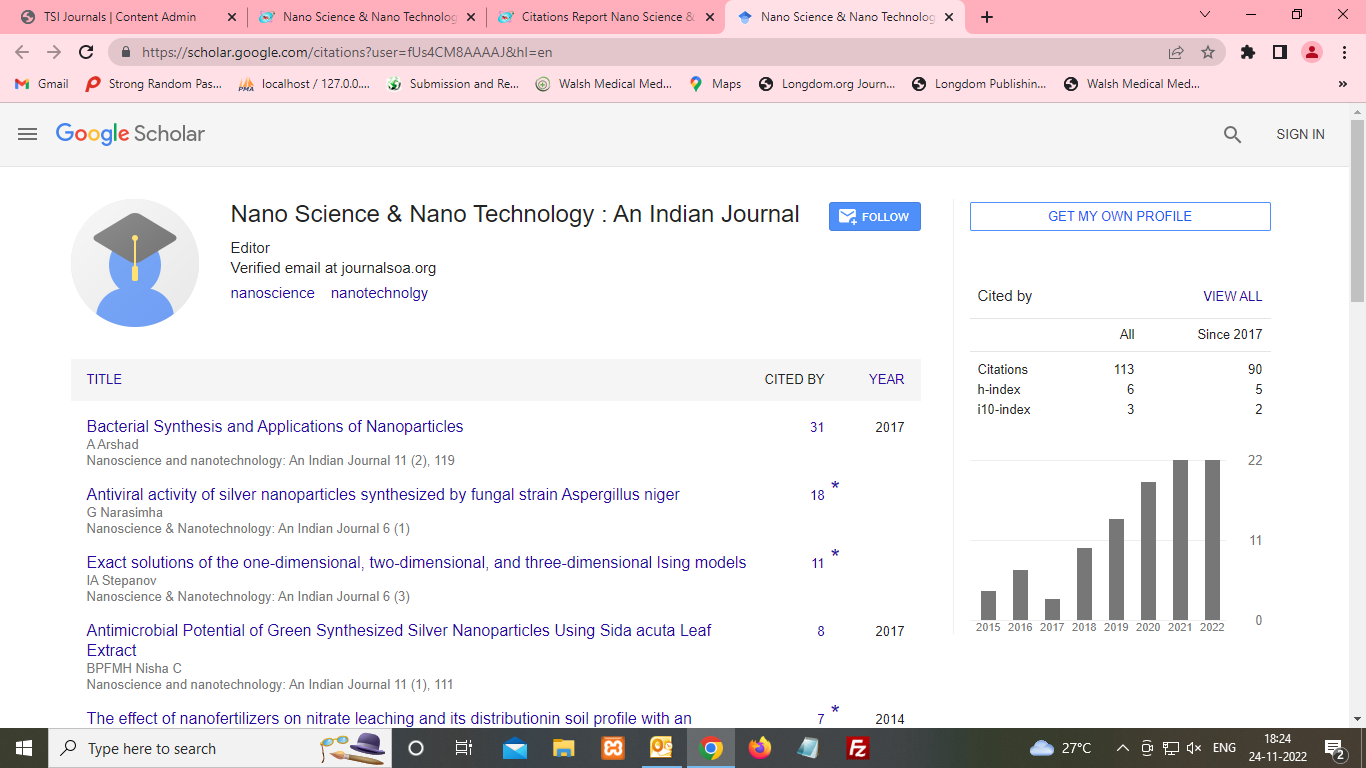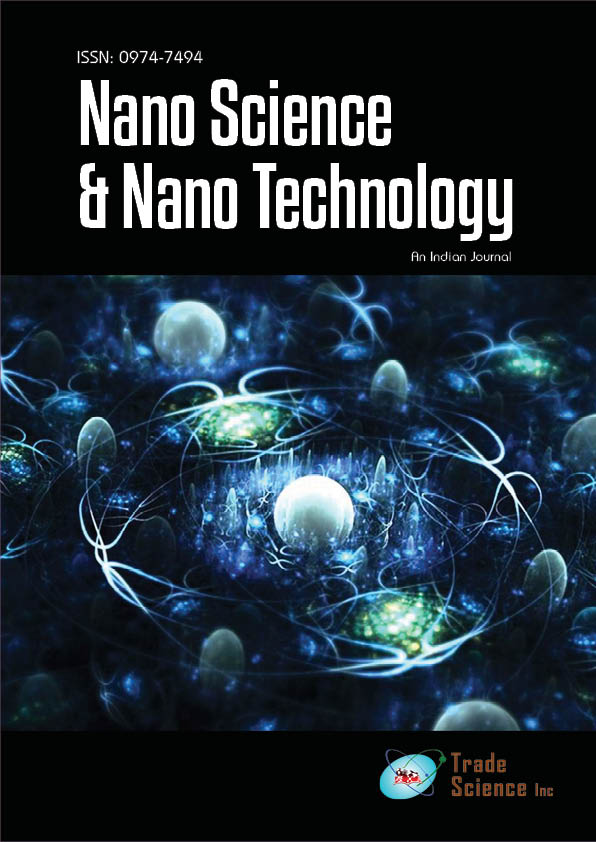Viewpoint
, Volume: 15( 1) DOI: 10.37532/0974-7494.2019.15(1).135Lignin Micro-and Nanoparticles (LMNPs)
- *Correspondence:
- Shradhanjali Gupta
Department of Pharmacognosy
United College of Engineering and Research, India
E-Mail: anjaliguptas@gmail.com
Received: June 11, 2021; Accepted: June 15, 2021; Published: June18, 2021
Citation: Shradhanjali Gupta, Editorial Note on Lignin Micro- and Nanoparticles (LMNPs). Nano Tech Nano Sci Ind J.2021;15(1):135
Abstract
Lignin Micro- and Nanoparticles
Lignin nanoparticles have emerged as a prospective alternative to fossil-based chemicals and products for several prospective added-value applications. Due to their structural variety and biodegradability. This review sheds light on a recent trend in nanolignins and related nanocomposites research. It highlights anti-solvent precipitation, self-assembly, and interfacial crosslinking as the various nanolignin synthesis methods. The chemical alteration of nanolignin and compounds with inorganic materials or polymers, as well as the fabrication of diverse nanocomposites, are also detailed. Advances in a variety of high-value applications are also discussed, including food packaging, biomedical, chemical engineering, and biorefineries [1].
The fact that most lignins are only soluble in water at alkaline pH limits their commercial usefulness, however the possibility for creating aqueous lignin nanoparticle dispersions has been demonstrated. As a result, the creation of lignin nanoparticles and other nanostructures has piqued researchers' attention in recent years. Because of their increased surface area, nanostructured materials, particularly those in the 1 nm-100 nm range, have unique characteristics, and their significant chemical and physical interactions are determined by surface characteristics. As a result, a nanostructured material with the same composition might have significantly different characteristics than a larger-dimensional material with the same content. As a result, potential applications include a safer alternative to hazardous nanoparticles, drug delivery systems, hydrophobic molecule transport, UV barrier enhancement, antibacterial, antioxidant characteristics, polymer reinforcing, and electrode material.
Lignin nanoparticles have the potential to be biodegradable carriers of biocidal actives with a low environmental impact. Using two distinct lignin precursors, Kraft (Indulin AT) lignin and Organosolv, we describe the colloidal production and interfacial design of nanoparticles with variable surface characteristics (high-purity lignin) [2-5].
The production of novel, high-value materials has been proposed using lignin micro- and nanoparticles (LMNPs) generated from by-products of pulp and paper and biorefinery activities. The practicality of LMNPs as long-term alternatives to synthetic or mineral-based particles is determined by scale-up, production costs, and applications. Improvement of mechanical characteristics of polymer nanocomposites, antibacterial and antioxidant characteristics, and impregnations on hollow lignin drug carriers for hydrophobic and hydrophilic compounds are only few of the applications. Carbonization of lignin nanostructures can also lead to high-value applications, such as energy storage in supercapacitors.
On the basis of ethanol evaporation, an enhanced approach for lignin precipitation from organosolv wasted liquors was devised. The procedure prevents lignin incrustations in the reactor, improves the filterability of the precipitated lignin particles, and decreases liquid bulk in downstream processes considerably. The solubility and softening characteristics of lignin were first recognised, measured, and used to design an improved precipitation process [6].
References
- Zhang Z, Terrasson V, Guénin E. Lignin nanoparticles and their nanocomposites. Nanomaterials. 2020;11(5).
- Beisl S, Miltner A, Friedl A. Lignin from micro- to nanosize: production methods. Int J Mol Sci. 2017;18(11):1244.
- Camilla Abbati de Assis, Luiz G. Greca, Mariko Ago, et al. Techno-economic assessment, scalability, and applications of aerosol lignin micro- and nanoparticles. ACS Sustain Chem Eng. 2018; 6 (9):11853-68.
- Beisl S, Friedl A, Miltner A. Lignin from micro- to nanosize: applications. Int J Mol Sci. 2017;18(11):2367.
- Schulze P, Seidel-Morgenstern A, Lorenz H, et al. Advanced process for precipitation of lignin from ethanol organosolv spent liquors. Bioresour Technol. 2016;199(1):128-34.
- Beisl S, Loidolt P, Miltner A, et al. Production of micro- and nanoscale lignin from wheat straw using different precipitation setups. Molecules. 2018;23(3):633.

